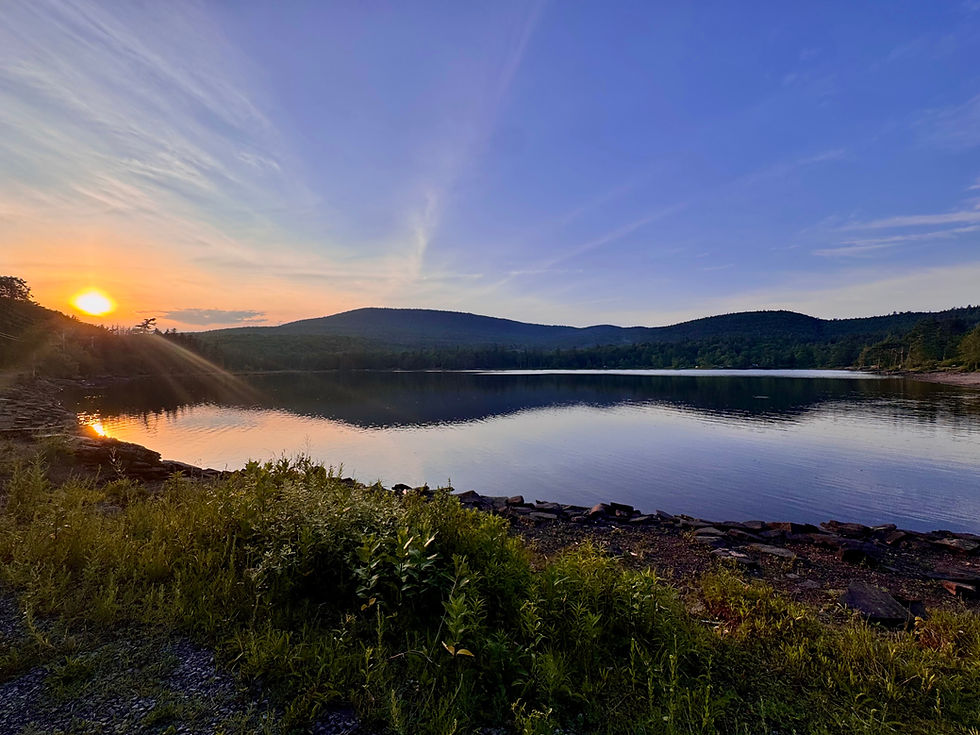Let's Go Geocaching: Complete Overview
- esteel8
- Nov 29, 2023
- 3 min read
Updated: Apr 17
Did you know that there are unexpected treasures hidden all around you? You just might not have the right tools to find them. In this blog post, we’re going to unravel the basics of geocaching: a global treasure-hunting game.
What is Geocaching?
Geocaching is a real-life version of a buried treasure hunt, where participants, commonly referred to as geocachers, use GPS or smartphone software to navigate to specific coordinates. The goal is to find hidden containers, called geocaches, that fellow players have placed in these locations.
It’s pretty simple, really. Someone hides a container, records the coordinates using a GPS device, and shares this information online. Nearby geocachers will then use these coordinates to locate the cache. Geocaches come in a variety of sizes and appearances, ranging from small containers with logbooks to large containers that may contain trinkets for trading.
It’s not all about finding the hidden cache, though. The best part is the journey there and the opportunity to explore new places. You’d be surprised at how geocaching allows you to discover some of the most interesting and scenic places around the world. It also connects you to a tight-knit online community where geocachers often share their experiences, hints, and tips on various websites and forums.
Find a Cache Near You
Getting started is a simple process. Download the official Geocaching app (pictured below) on your smartphone or mobile device. Once you've created your account, navigate to the map feature and select from one of the available caches to view its attributes. Here, you will unlock a wealth of information about your cache, from its name, owner and date placed, terrain rating, difficulty level, size, and last found date, to its detailed description, hints, and additional insights.
Once you’ve decided on a cache to pursue, begin navigation. You will be provided with detailed coordinates to follow. If you’re having trouble finding the cache, look at the recent activity and the hint for clues. Once found, be sure to return back to the cache listing to log your find.
Essential Gear
You don’t need much more than a smartphone or GPS device to prepare for your geocaching quest. But, the following recommendations can surely help. Since most geocaches are hidden in obscure places, it’s a smart idea to wear clothing and shoes suitable for the outdoors and the elements. Depending on the size of the cache, consider bringing a pen to sign your username and date for logbooks, or stowing a small trinket to trade in larger caches.
Cache Etiquette
There are a couple guidelines to keep in mind while geocaching. The first, and most obvious for any outdoor adventure, is to follow “Leave No Trace” rules. In the world of geocaching, it’s called Cache In Trash Out (CITO). This principle reminds people to protect public lands by picking up trash along the way and leaving nothing behind when they’re finished.
Next, don’t write a bland log! Whether you found your geocache or not, make sure to write a detailed log for the geocacher who placed it, and all the future geocachers who wish to find it next. It’s an unwritten standard among the geocache community, and is a great way to say thank you to the cache owner or help out stumped geocachers thereafter.
Last but not least, put the geocache back exactly how it was found. This way, the geocache owner can locate their cache if need be, and future geocachers can share the same experience you did finding the cache.
Additional Features
A notable geocaching feature is called “trackables.” Unlike tradable items, trackables are physical objects meant to travel from one geocache to the next. Geocoins and Travel Bugs are two examples of trackables. These can be purchased for the Geocaching shop and include a unique six-digit code that can be used to record its journey.
Once you’re well-versed in the world of geocaching, consider placing one yourself! It is recommended to find at least twenty caches first so you can gauge different terrains, difficulty levels and cache sizes. Review the geocaching guidelines to troubleshoot any questions you might have. Next, choose the perfect location and container, and submit your geocache for review and publication, here. Don’t forget to perform general maintenance on your geocache so it can remain in good condition for years to come!
Now that you’re armed with the fundamentals, we encourage you to indulge in the great outdoors in a refreshingly different way. Whether you’re a seasoned adventurer or curious beginner, may the thrill of the hunt accompany you along your geocaching journey!






Comments